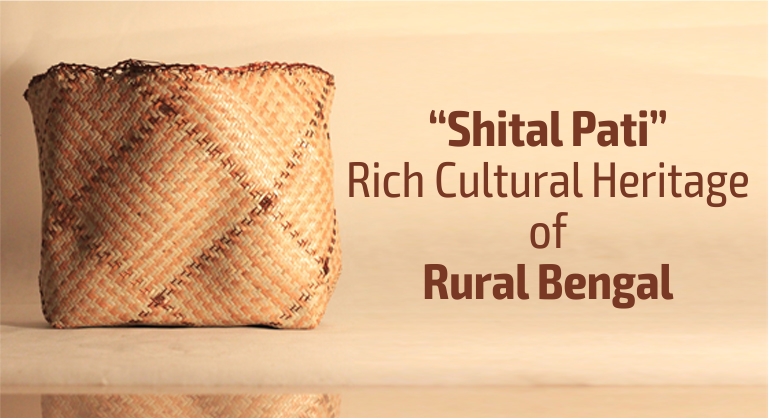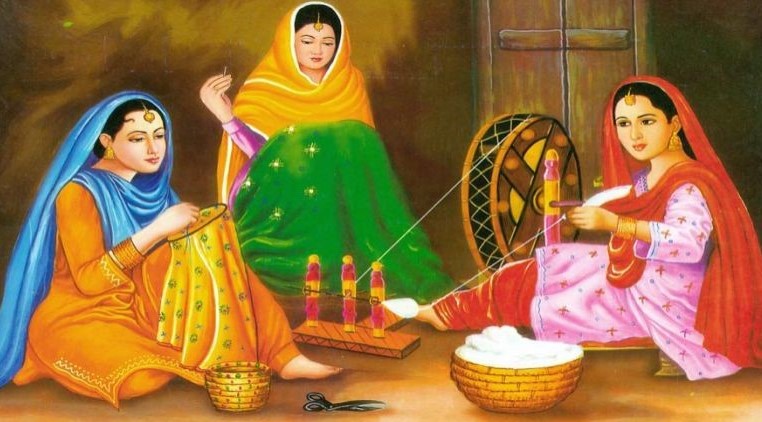Shitalpati which is quite a common commodity in rural Bengal. Popularly called “Sitalpati” by the locales, it is becoming quite a renowned name across the globe. All credit for its popularity goes to UNESCO who recognised this traditional art as ‘Intangible Cultural Heritage of Humanity’.
Well, the history of ‘Sitalpati’ takes us across the borders of India to Bangladesh. These are made of murta plants that grow in the water bodies of Sylhet, Sunamganj, Barishal, Tangail, Comilla, Noakhali, Feni and Chittagong. These mats are a speciality of Bangladesh and have sailed across the borders with the refugees who knew nothing but weaving of these cold mats and selling them.
Sitalpati where ‘sital’ means cold and ‘pati’ means mat. When both the words come together ‘Sitalpati’ can be said as ‘cold mats’. Yes, these cold caresses are extremely commodious during the summer months. These mats are so smooth that even a snake cannot wriggle over it. However Sital pati has its own exclusivity. Weavers are dependent on the exclusivity of these mats from generations and there are families and villages in West Bengal who are dedicated to this small scale business. This blog is about one such village in India, very close to Cooch Behar named Ghughumari.
Cooch Behar which was ruled by the Koch dynasty is a home to these cool mats. More than 14,000 families are involved in mat-weaving in this princely state. These mats have patterns which are created by the weavers to make it more graceful and pleasing. These designs are unique but simple.
Government of West Bengal in collaboration with UNESCO has developed a Rural Craft Hub at Ghughumari which is just 20 minutes away from Cooch Behar. This craft hub has the essence of the rich tradition of West Bengal and it showcases variety of crafts that are exclusive to this region.
Ghughumari has taken the craft of sitalpati across the world. It is making the craft more and more popular which can be beneficial for the craftsmen and their families who are involved in this business for generations. This craft hub doesn’t only showcases mats but also displays baskets, handbags, purses and many unique things made of the same material. Ghughumari is an initiative by the West Bengal’s Department of Micro, Small and Medium Enterprises & Textiles with an objective to uplift the rural craftsmen and their families who are associated with this craft. Ghughumari is also attracting tourists from all over the world which is not only making ‘sitalpati’ popular and a known name but also is aggravating the tourism of the state.
Tradition of sitalpati weaving was inherent to Bangladesh but was brought to India by the craftsmen who came to India after partition as refugees and continued with the craft they knew best for earning their livelihood. The 14,000 families in Ghughumari who are involved in sitalpati weaving are natives of Bangladesh and today are earning their everyday living by weaving these beauties.
While the mat-making material is available in bountiful quantity, this craft is yet to be recognised. UNESCO’s efforts in Ghughumari is uplifting the craftsmen and exposing them to the world so that their craft gets recognised.
Sitalpatis are still an essential commodity of every rural household. Women of the household use these mats either for their morning vegetable cutting sessions or for lazing around in the afternoon with other women in the community. These mats are ageless and will remain to be an integral part of these households for years to come. Weavers are carrying over the craft from generations to generations and their families will be involved in weaving for generations to come.











1 comment
Got information of new product by villagers